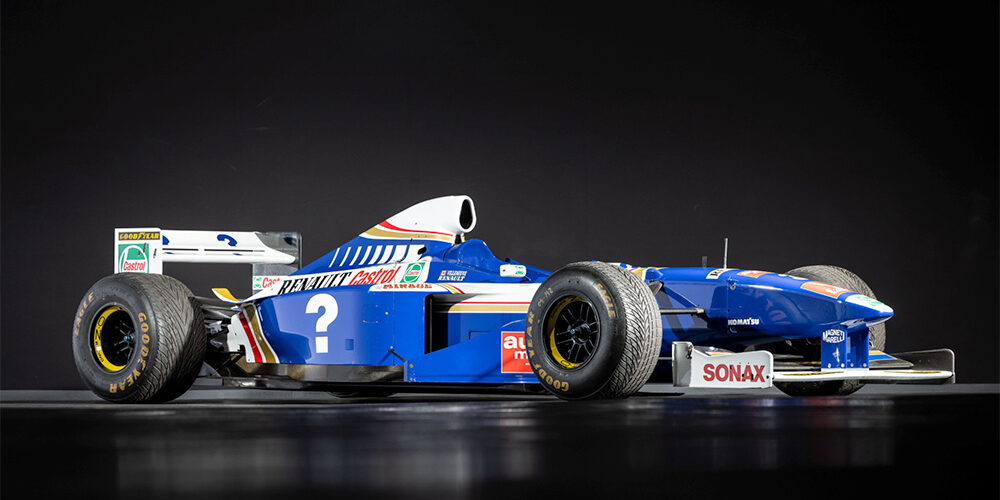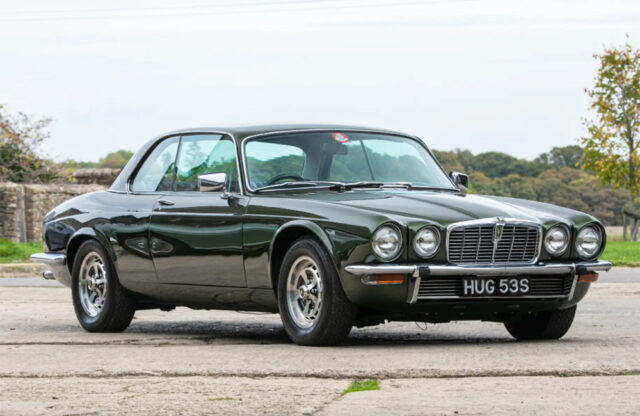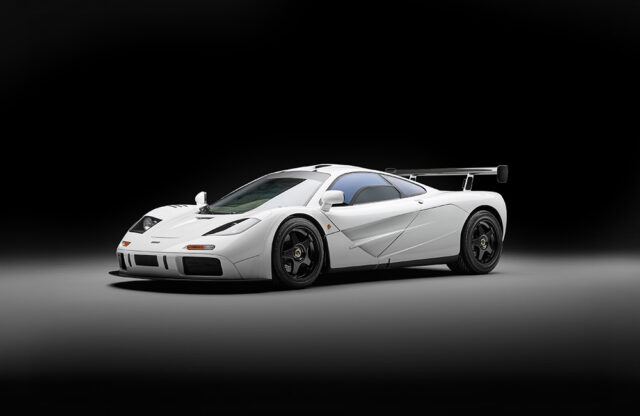The full lot list for the Artcurial Renault Auction 2025 – the sale set to raise funds for the French automotive brand’s new heritage centre planned in Flins – has been released. Due to open in 2027, the venue will be located 40km west of the capital Paris, on the site of the former production plant that built millions of Renaults from 1952 onwards – you can read more about that here.
As for the Artcurial Renault Auction, which takes place on December 7, 2025, we first brought you news of that here. Now the full lot list of 180 items from Renault’s own collection, ranging from cars to models, and from Formula 1 machines to prototypes, has been revealed.
Here are ten of Magneto magazine’s favourite lots.

This is one of seven Williams FW19 chassis built for the 1997 Formula 1 season. Chassis FW19-03 is presented in excellent condition and retains its original suspension, running gear, electronics, radiators and bucket seat embossed with ‘JV’. Finished in Jacques Villeneuve’s colours with the number ‘3’, it carries a non-tobacco visual treatment in line with sponsorship rules of the time.
FW19-03 joined the Renault Collection in October 1998, and it has been carefully preserved yet rarely displayed. The car was used in pre-season and Championship testing, serving as Villeneuve’s T-car at several rounds, including Australia, Monaco, Germany, Japan and Jerez, the title-deciding event. It also ran in the Brazilian Grand Prix with Heinz-Harald Frentzen, finishing ninth. It later took part in winter testing with Max Wilson and Juan Pablo Montoya getting behind the wheel. It’s estimated at between €800k and €1.2m at the Artcurial Renault Auction 2025.

RE 40-04 is one of seven RE 40 chassis produced by Renault Sport for the 1983 season, of which six have remained with the team. It is accompanied by its logbook, detailing each track outing, configuration, set-up and driver feedback, providing a complete record of its racing history. The logbook shows that testing began at Zeltweg on July 6-7, 1983 ahead of the Austrian Grand Prix on 14 August.
Eddie Cheever tried various spoilers and tyres despite engine issues caused by an oil pump surge, ultimately selecting Michelin 439 T tyres. The car then moved to Silverstone for the British Grand Prix, with testing starting on July 14. Cheever noted slight oversteer and short gearing in third and fourth, setting the seventh-fastest time, but the car retired from the race due to an overheated engine, while Alain Prost took the win.
At Hockenheim for the German Grand Prix, testing began on August 5. Cheever set the sixth-fastest time despite rain, but his accelerator jammed while running fourth, forcing retirement. Back at Zeltweg, practice on August 12-13 proved challenging, leaving him eighth on the grid, although he finished fourth in the race with Prost claiming victory. The Dutch Grand Prix at Zandvoort followed on August 28. Cheever was 11th fastest in testing but retired from the race with engine failure, while Prost also failed to finish. Testing for Monza on September 9-10 introduced a qualifying engine with turbo pressure restricted to 52psi; Cheever set the seventh-fastest time and took third in the race, his best result of the season.
The car concluded its season with the European Grand Prix at Brands Hatch on September 25 and the South African GP at Kyalami on October 15, finishing tenth and 11th respectively, with Kyalami marking Cheever’s final race for Renault. It made a final outing on December18 at Paul Ricard for a session with professional drivers for the motoring press.
Now restored in Prost’s colours, the car has appeared at Historic events including the Grand Prix de France Historique, Nice, Monaco and the Goodwood Festival of Speed, with Alain Prost and his son Nicolas driving it. Mechanically restored in 2024 with a new engine, it has been sparingly used since. It’s estimated at between €500k and €700k at the Artcurial Renault Auction 2025.
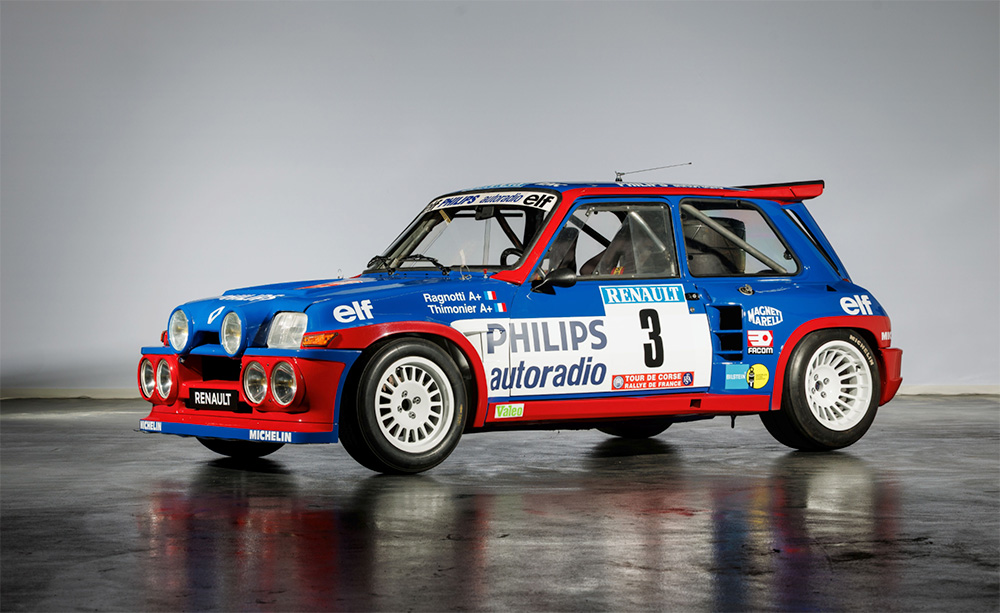
The Renault presented here is closely linked to the development of the Maxi 5 Turbo. Renault’s collection includes three notable Maxis: the yellow-and-black prototype driven by Alain Serpaggi in 1984, the ‘Philips’ Maxi driven by Jean Ragnotti (chassis 702), and the ‘Diac’ Maxi driven by François Chatriot (chassis 705). All three cars had variations depending on event preparation, making precise identification challenging.
The car offered lacks identification plates and registration, but it was transferred to Renault Heritage in 1990 as ‘Maquette 3’. It is, however, a functional prototype, having been driven 7000 km, with previous mounting points for identification plates visible. While currently missing its engine and fuel tanks, it retains the Maxi 5 Turbo’s polyester, Kevlar and aluminium bodywork, magnesium wheels, suspension, wiring loom and a largely complete interior including an aluminium roll cage, dashboard, hydraulic handbrake and brake balance control. Examination reveals a Tour de Corse bodyshell modified to Maxi specifications. Key features from the TdC remain, including steering, firewall openings, roll cage, turbo placement and rear strut mountings.
Components aligned with the Maxi include rear suspension, front strut brace, front wheelarches and body panels, plus fittings for turbo, air filter and water injection. Historical research and engineer François Bernard’s recollections suggest this car, known as the B0 prototype, was used in 1983-84 to develop the final Maxi 5 Turbo. It’s estimated at between €80k and €120k.
There are numerous Renault 5s in the Artcurial Renault Auction 2025, ranging from police cars to EV-converted examples used as promotional tools for the new R5 electric car.
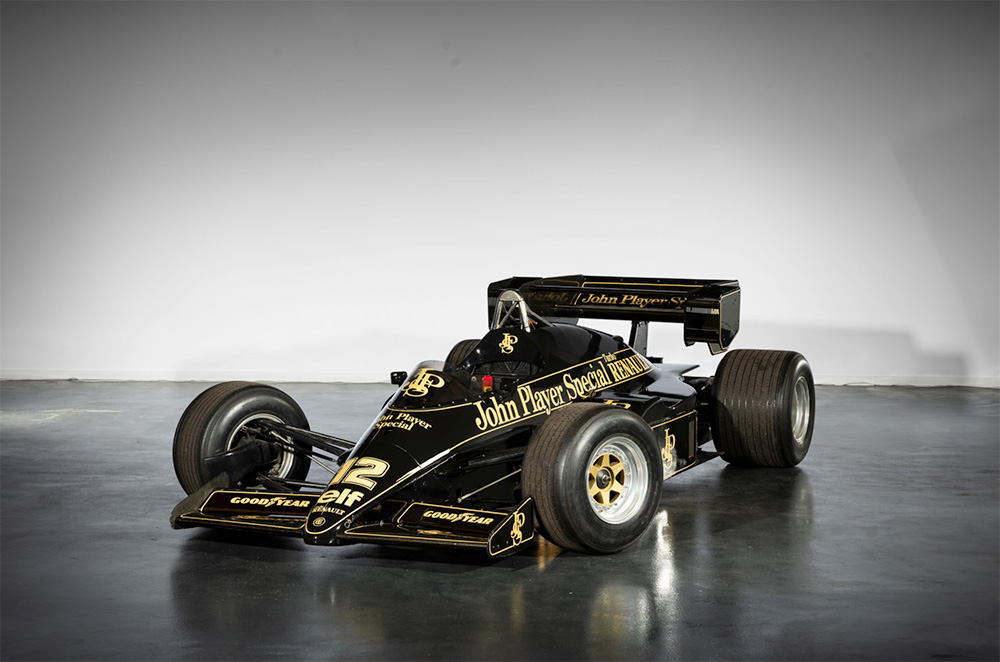
This 1984 Lotus 95T-4, chassis no. 4, was the fourth and last 95T built. Despite now carrying Nigel Mansell’s no. 12, it primarily served as the spare car for Elio de Angelis (no. 11) during the 1984 season. De Angelis raced it three times, scoring points in each appearance.
At the Canadian Grand Prix in Montréal, de Angelis switched to chassis 4 on race morning following engine problems in both his own car and Mansell’s, which required a second engine change. Qualifying third, he dropped several places at the start and suffered turbo engine power loss. Despite losing second gear, he finished fourth, with Mansell salvaging a sixth-place point. In Detroit, de Angelis again used chassis 4, running as high as second before losing second gear, eventually finishing third on the road. Following Tyrrell’s disqualification from the season, he was promoted to second. Mansell’s own race was marked by controversy after a collision with Prost and Nelson Piquet.
Chassis 4 returned for the season finale in Portugal at Estoril. De Angelis switched to it after a front-suspension issue damaged his primary car. Running sixth early on, he suffered engine power loss but secured fifth, helping him claim third in the 1984 Drivers’ Championship. Mansell, meanwhile, retired from second place following a brake failure.
The car joined the Renault Collection in the late 1990s. After discussions with Clive Chapman, who sought to operate ex-Senna 95T and 97T cars under Classic Team Lotus, it was traded to him in exchange for several engines. It’s estimated at between €350k and €700k at the Artcurial Renault Auction 2025.
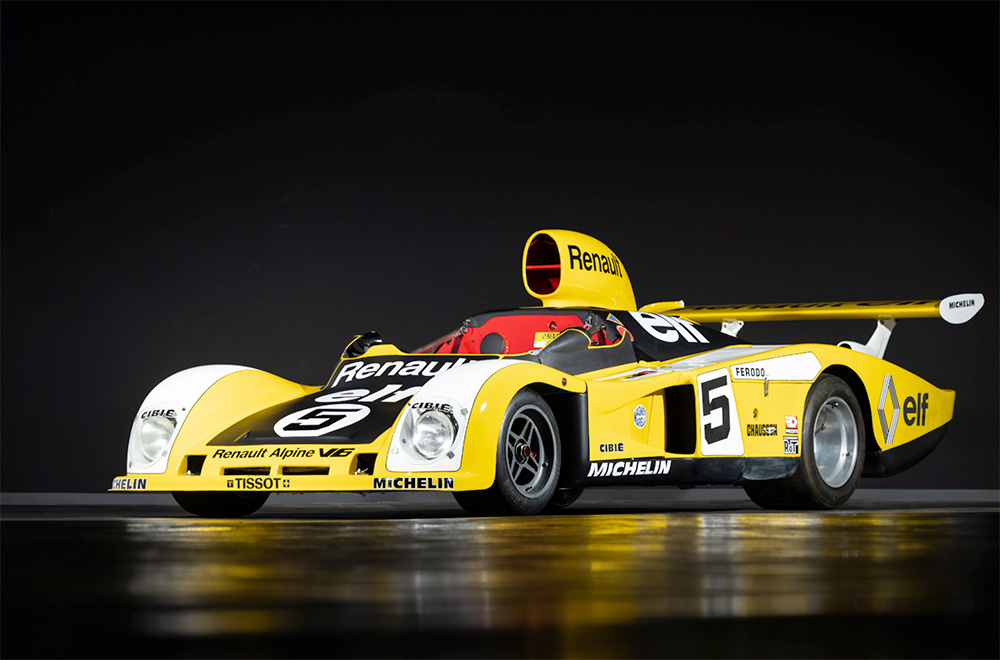
This Renault-Alpine A442 (chassis A 4420) was the first to contest the 1975 World Championship, driven by Gérard Larrousse and Jean-Pierre Jabouille, before being joined by A 4421. Although turbocharged sports prototypes were not yet eligible for Le Mans and the cars still faced reliability issues, A 4420 achieved notable results, including third at Monza and fourth at the Nürburgring, helping Renault secure third in the 1975 Constructors’ Championship.
Under Bernard Hanon’s direction, Larrousse became head of Renault Sport, prioritising a Le Mans victory. By 1977, all efforts were focused on endurance racing, with rallying and Formula 1 development scaled back. Extensive testing at Le Castellet and a long-tail configuration improved reliability and drivability. Four A442s competed at Le Mans that year, including chassis A 4420 in Bendix colours with the Oreca team, driven by Didier Pironi, René Arnoux and Guy Fréquelin. All retired due to misfortune, however.
Although it did not race, A 4420 remained in the pits as a test mule during Renault’s 1978 triumph with the A 442 B. The chassis stayed with Renault and has been cosmetically restored. Fitted with a V6 turbo, its engine and suspension are incomplete, but visually it closely resembles its configuration during high-speed testing at the Columbus speed ring in the US in November 1977, including the distinctive red-painted rear firewall. At the Artcurial Renault Auction 2025, it’s estimated at between €250k and €500k.
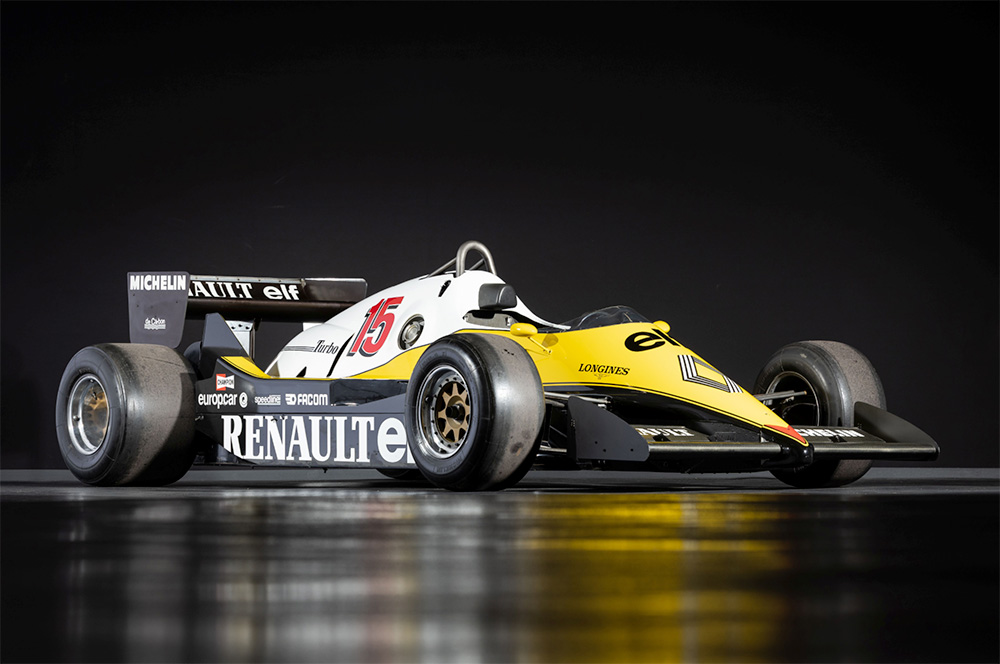
Another of the 1983 F1 cars in the Artcurial Renault Auction 2025, this is chassis RE 40-03. It began its career with a run of four Grands Prix in just over a month, before being used mainly for testing. Its first race was the San Marino GP on April 29, 1983. Prost noted the car “runs well and the brakes are OK”, and he set the fourth-fastest time, finishing second behind Patrick Tambay. Preparatory tests at Le Castellet followed, ahead of Monaco, where Prost recorded the fastest time in testing despite oversteer complaints. A tyre issue in the race saw him finish third.
At Spa-Francorchamps, Prost converted pole into victory, while Cheever finished third. The car then travelled to Detroit, where Prost qualified 13th and finished eighth, and to Montreal, using the spare car to finish fifth. At Silverstone, both Prost and Cheever conducted set-up tests, with Cheever noting consistent performance. Later, Prost achieved victory in the RE 40-05, while RE 40-03 continued in private and official testing at Zandvoort, Hockenheim, Zeltweg and Brands Hatch.
Its final race was at Monza on September 11, ending in retirement due to turbocharger failure. Subsequent tests included Brands Hatch and Kyalami, with Cheever noting the car was “oversteers everywhere, much livelier”. The final session, on January 4, 1984, was conducted by Derek Warwick for gearbox testing, marking the end of its official career after covering 7826km.
In 1985, RE 40-03 was transferred to Renault’s Public Relations department, and in May 1995 it underwent a cosmetic restoration for display at the Pub Renault on the Champs-Élysées, including a repaint, restoration of the bodywork, application of the original livery and reproduction of period stickers. Subsequently, it appeared at events including the Paris Motor Show (1998) and Rétromobile (1999), and at the Musée National de l’Automobile and Collection Schlumpf (2000-2007, 2014-2017, 2021-2022). It’s estimated at between €500k and €800k at the Artcurial Renault Auction 2025.
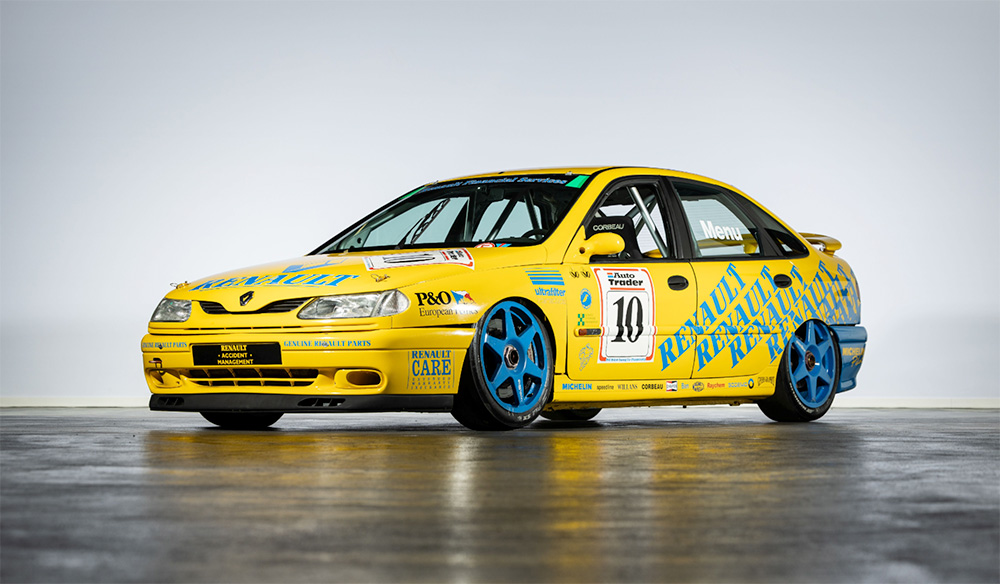
This Renault Laguna dates back to the 1994 British Touring Car Championship and is believed to have been driven by 1997 and 2000 series champion Alain Menu. The car retains its original running gear and is generally well preserved, appearing largely complete apart from the engine and gearbox. It carries Matter bodyshell number 430. It’s estimated at between €30k and €50k.
Other non-F1 competition cars in the Artcurial Renault Auction 2025 include an Espace 2000 TSE Quadra driven on Renault’s ‘Grandeur Nature’ long-distance rally from Guinea to the North Cape, covering 15,000km in five weeks to act as back-up for eight Renault 19s (estimated at €6k-€10k). There’s also a 1990 Renault 5 GT Turbo Group N car driven to second place on the 1990 Ivory Coast-Bandama Rally (est €30k-€50k) and a 1988 Renault 21 Turbo driven by future Renault COO and Stellantis boss Carlos Tavares in the European Rally Championship (est €15k-€20k).
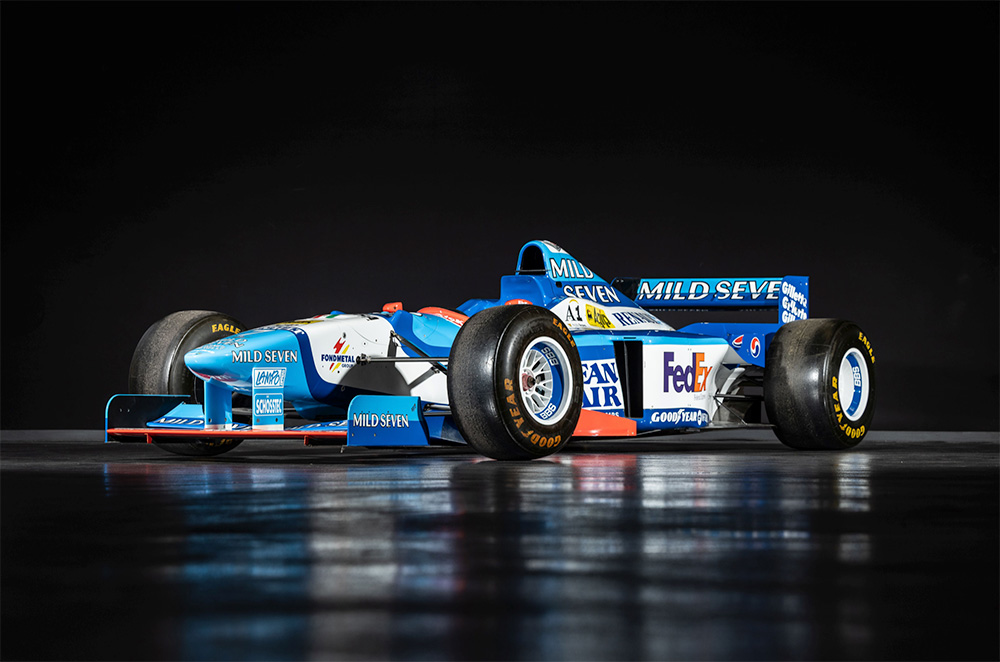
This Benetton B197 (chassis 5) was raced primarily by Jean Alesi during the 1997 season, including the opening Australian Grand Prix in Melbourne, where he ran out of fuel, and it achieved podium finishes in Montréal and Silverstone. At Melbourne, Alesi qualified eighth after struggling for grip due to a team error, likely involving ride height, and ran fourth in the race before the car ran dry on lap 35 following a pit-to-car radio failure.
At the Argentine Grand Prix, Alesi qualified 11th and, on a hard-tyre, one-stop strategy, ran ninth but dropped to seventh after a downshift issue. San Marino saw him start 14th at Imola, again struggling with tyre-temperature management, but he finished fifth on a patient one-stop run. Monaco brought disappointment as he qualified ninth, challenged Mika Salo’s Tyrrell, spun at Portier and retired on lap 16.
Chassis 5 then delivered three podiums in four races. In Spain, qualifying fourth, Alesi finished third after conserving tyres intelligently. In Canada, he qualified eighth, moved up the order after Jacques Villeneuve retired, and he was classified second behind Michael Schumacher after a race stoppage. At Magny-Cours, Alesi qualified eighth, briefly led during a rain-affected race, but finished fifth after a collision with David Coulthard.
Silverstone marked another highlight. Despite qualifying 11th, Alesi ran a one-stop race to finish second behind Mika Häkkinen, with team-mate Alex Wurz next up. The car’s final Grand Prix appearance was at Jerez for the European GP in Gerhard Berger’s hands, his last F1 race. Berger qualified eighth and finished fourth after passing Eddie Irvine on the last lap, in a race marked by Schumacher’s collision with Villeneuve.
Chassis 5 officially joined the Renault Collection on December 20, 1999, supplied by Renault Sport. The V10 engine has since been removed, leaving the car without a power unit. Following its retirement from active competition, it was displayed in two exhibitions before being loaned for further display purposes. It’s estimated at between €200k and €300k at the Artcurial Renault Auction 2025.
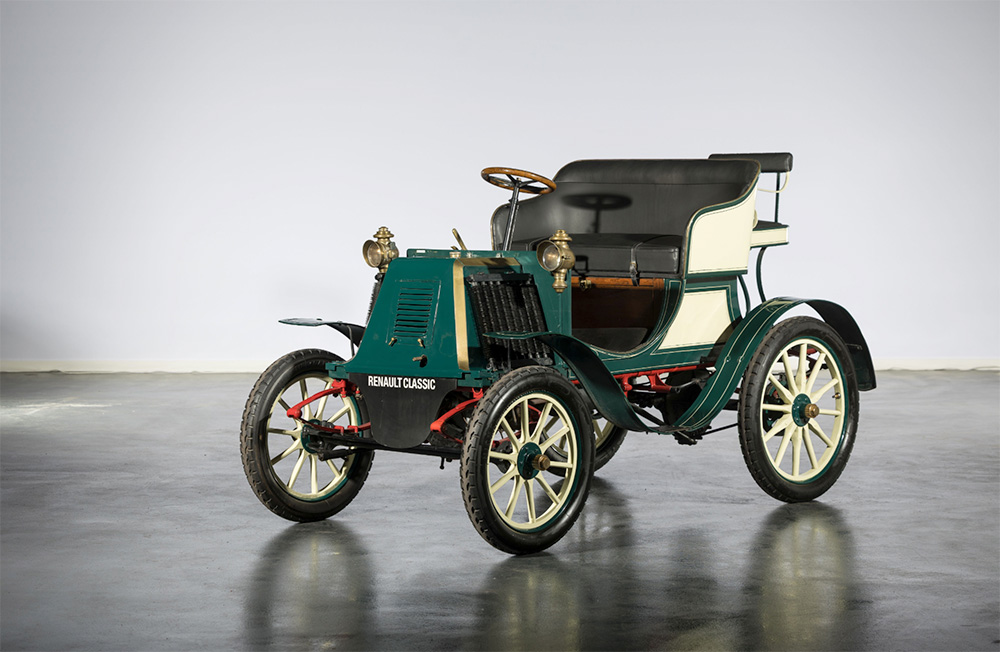
This 1901 Renault Type D two/three-seat voiturette entered the Renault Collection in 1965. It is a small voiturette with a single rear seat, finished in two-tone green and cream with spoked wooden wheels. The car retains period features such as a dashboard-mounted lubrication system, lever-operated controls and characteristic body mouldings. Restored in the 1990s, it is well preserved and comes with documentation including Renault service records and restoration notes. Mechanically, it will require inspection before being driven – and it’s eligible for the London to Brighton Run. It’s estimated at between €50k and €70k at the Artcurial Renault Auction 2025.
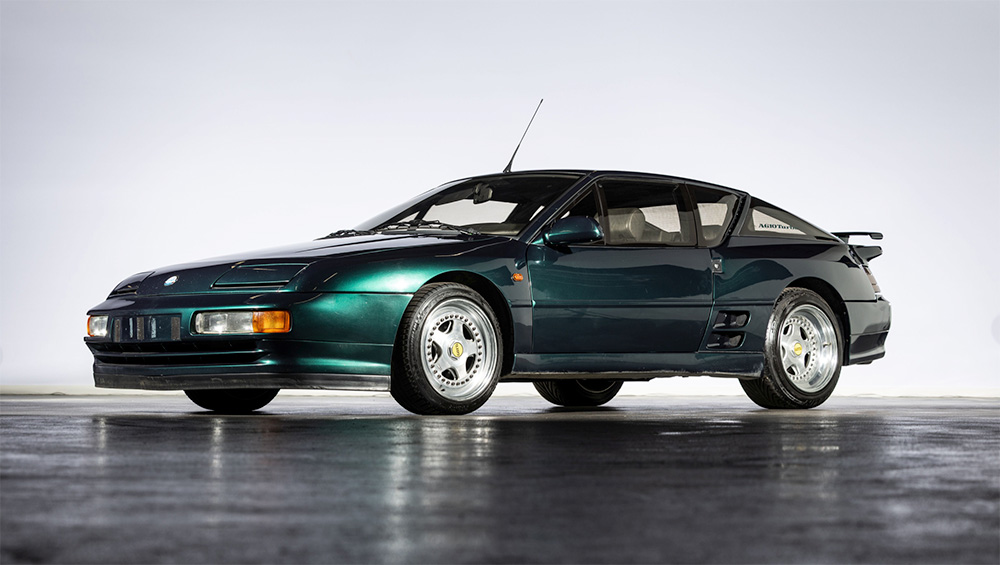
In response to declining sales in mid-1993, the Dieppe factory explored a version of the A610 intended to replicate the commercial success of the A310 GT Pack and the V6 Turbo ‘Le Mans’, both noted for their flared wings and wide alloy wheel. In autumn 1993, Berex, the design and research office in Dieppe, investigated the concept of an A610 fitted with the broader wings of the ‘Le Mans’ model. This version was to run on eight- and ten-inch-wide Gotti wheels, and the 250bhp V6 Turbo engine was upgraded to 280bhp via a modest increase in boost, a revised ECU chip and a new wastegate. Torque rose to around 316 lb ft.
The first 610 Evolution Le Mans, in Ottoman Green and chassis number 592, is the car above. A second example was completed shortly after in pearlescent Electric Blue, chassis number 543. Both cars underwent individual testing at the factory and were assigned type designation D50305A, whereas the standard ‘Le Mans’ turbo V6s were D50205A. The factory has confirmed that only these two A610 ‘Le Mans’ evolution cars were produced. Concerns over the cost of series homologation and the gearbox’s ability to handle the increased power led Renault not to proceed with wider production. With just 42,466 km recorded, it is described as “mechanically sound but will require a full overhaul”. It’s estimated at between €30k and €40k.
Other prototypes and oddities in the Artcurial Renault Auction 2025 include a 2009 Renault Fluence Z.E. concept (est €5k-€15k) and a 1989 Chausson P.E.R.L.E. concept car (est €4k-€8k).
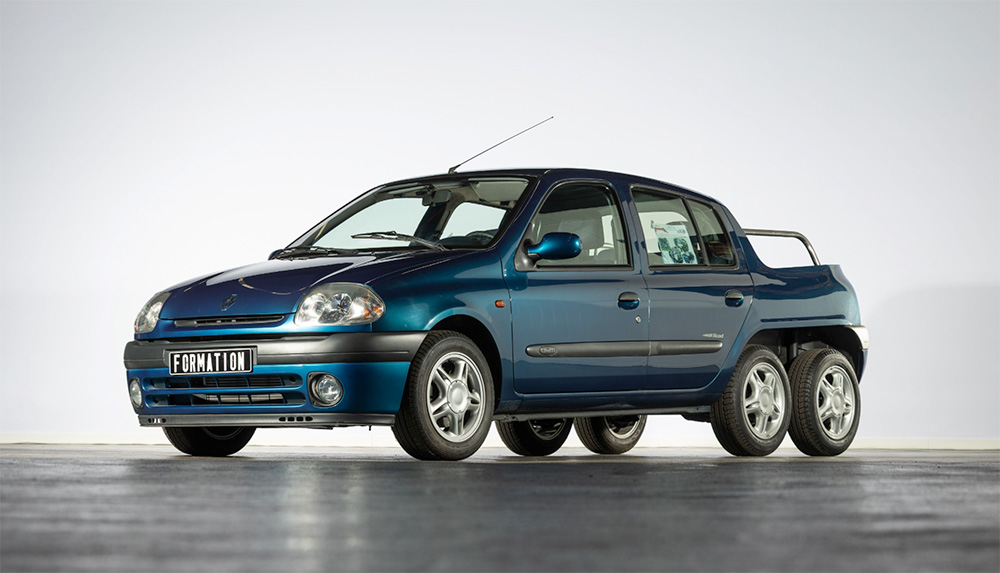
Okay, just one more – and one of our favourite lots from the Artcurial Renault Auction 2025. Based on a Clio II, this vehicle was constructed at the Flins factory in 2001 by production workers as part of their metalwork training. The original Clio was modified at the rear and extended to create an open area, complete with two grab handles. To support the weight of a potential load, a second rear axle was added.
Carefully built and well preserved in its original condition, this design exercise can only be driven at low speeds and, as a prototype, cannot be registered or used on public roads. That’s a pity, as we’d love to see the looks on people’s faces if we turned up at the Calais hypermarché prior to the dash across the Channel…
Further details
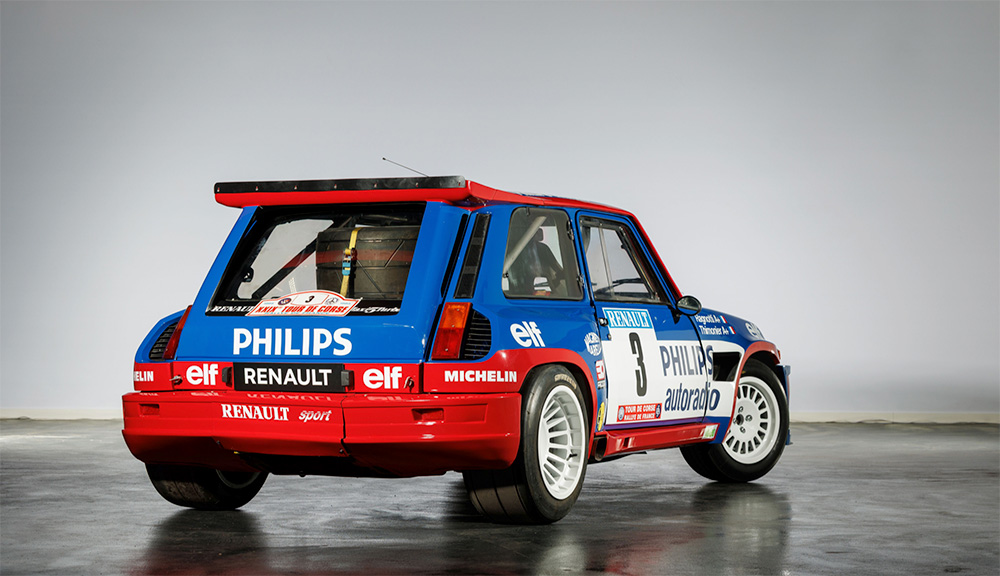
For more information on the Artcurial Renault Auction 2025 on December 7, 2025, head here.

